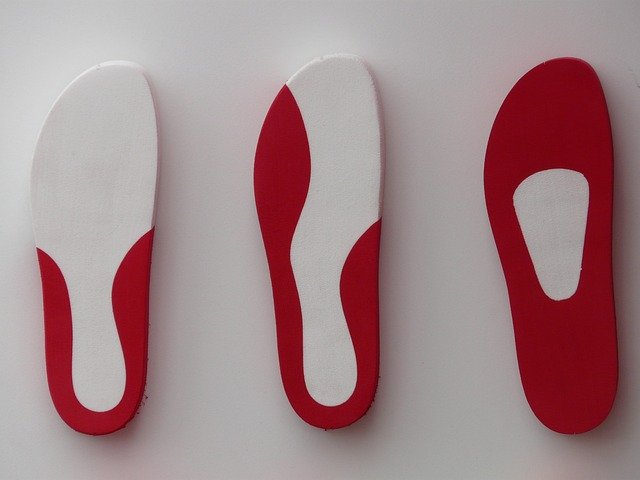Plantar Fasciitis Shoes for Women: A Practical Guide to Supportive, Comfortable Footwear
Plantar fasciitis affects millions of women worldwide, causing sharp heel pain that can make every step uncomfortable. The right footwear plays a crucial role in managing this condition, providing the support and cushioning needed to reduce inflammation and promote healing. Understanding which shoe features matter most and how to select appropriate footwear can significantly impact your comfort and recovery journey.

Living with plantar fasciitis doesn’t mean sacrificing style or comfort when choosing footwear. The condition, characterized by inflammation of the thick band of tissue connecting your heel bone to your toes, requires specific shoe features to provide relief and prevent further irritation. Women facing this challenge need footwear that combines therapeutic benefits with everyday practicality.
Why Footwear Matters: Plantar Fasciitis Basics
Plantar fasciitis occurs when the plantar fascia becomes overstretched or torn, leading to inflammation and pain. Poor footwear choices can exacerbate this condition by failing to provide adequate support or by placing additional stress on the affected tissue. Shoes with minimal arch support, worn-out soles, or improper fit can worsen symptoms and delay healing. Understanding this connection helps explain why investing in appropriate footwear becomes essential for managing the condition effectively.
The biomechanics of walking change when plantar fasciitis develops. Each step can create micro-tears in the inflamed tissue, particularly during the first steps in the morning when the fascia is tight. Supportive footwear helps distribute weight more evenly across the foot, reducing concentrated pressure on the heel and arch areas.
Essential Shoe Features: Arch Support, Cushioning, and Stability
Three critical elements define effective plantar fasciitis footwear. Arch support maintains the foot’s natural curve and prevents overstretching of the plantar fascia. This support should be firm yet comfortable, providing consistent contact along the arch without creating pressure points. Quality arch support helps control excessive foot motion that can aggravate the condition.
Cushioning, particularly in the heel area, absorbs impact during walking and standing. Memory foam, gel inserts, or specialized cushioning materials can significantly reduce the shock transmitted through the heel to the plantar fascia. However, excessive softness can be counterproductive, as it may reduce stability and support.
Stability features include a firm heel counter and adequate midfoot support. The heel counter, the rigid structure at the back of the shoe, prevents excessive heel movement and maintains proper foot alignment. A stable platform reduces unwanted foot motion that can stress the plantar fascia during daily activities.
Finding the Right Fit: Sizing, Heel Height, and Orthotic Compatibility
Proper sizing extends beyond simple length measurements. Width, toe box space, and overall foot volume all impact comfort and effectiveness. Many women find that plantar fasciitis symptoms worsen in shoes that are too narrow or too short, as these create additional pressure points and restrict natural foot movement.
Heel height requires careful consideration. While completely flat shoes might seem logical, a slight heel elevation of 1-2 inches can actually reduce strain on the plantar fascia by decreasing the stretch required during walking. However, heels higher than 2 inches typically increase forefoot pressure and should be avoided during active treatment phases.
Orthotic compatibility ensures that custom or over-the-counter insoles can be accommodated. Removable insoles and adequate depth allow for the insertion of specialized orthotics without creating a cramped fit. This flexibility becomes particularly important for women who require custom orthotics prescribed by healthcare providers.
Best Shoe Types and Styles for Everyday and Active Use
Athletic shoes designed for walking or running often provide excellent plantar fasciitis support. These shoes typically incorporate advanced cushioning systems, motion control features, and appropriate arch support. Cross-training shoes can offer versatility for various activities while maintaining therapeutic benefits.
For professional environments, supportive dress shoes and low-heeled pumps with built-in arch support are available. These options combine workplace-appropriate styling with therapeutic features, though they may require additional insoles for optimal comfort.
Casual footwear options include supportive sandals with contoured footbeds, walking shoes with enhanced cushioning, and boots with proper arch support. The key lies in prioritizing support features while finding styles that suit individual preferences and lifestyle needs.
| Shoe Type | Key Features | Price Range |
|---|---|---|
| Athletic Walking Shoes | Motion control, gel cushioning, removable insoles | $80-$200 |
| Supportive Sandals | Contoured footbed, adjustable straps, arch support | $60-$150 |
| Orthotic-Friendly Dress Shoes | Removable insoles, low heel, arch support | $100-$250 |
| Therapeutic Sneakers | Medical-grade support, extra depth, cushioned heel | $120-$300 |
Prices, rates, or cost estimates mentioned in this article are based on the latest available information but may change over time. Independent research is advised before making financial decisions.
Maintenance, Insoles, and When to Replace Your Shoes
Regular maintenance extends shoe life and maintains therapeutic benefits. Rotating between multiple pairs prevents excessive wear and allows shoes to fully dry between uses. Cleaning according to manufacturer instructions preserves materials and prevents odor buildup that can occur with increased wear time.
Insole replacement or supplementation can enhance existing shoes. Over-the-counter arch supports, heel cups, or full-length cushioned insoles can transform moderately supportive shoes into more therapeutic options. Custom orthotics prescribed by podiatrists provide the highest level of individualized support.
Shoe replacement timing depends on wear patterns and symptom changes. Athletic shoes typically require replacement every 300-500 miles of walking or running. For dress shoes and casual footwear, visible wear on the outsole, compressed midsole cushioning, or return of plantar fasciitis symptoms may indicate replacement needs. Maintaining a shoe diary can help track wear patterns and replacement schedules.
Selecting appropriate footwear represents a significant step in managing plantar fasciitis effectively. By understanding the relationship between shoe features and foot mechanics, women can make informed choices that support healing while maintaining their desired lifestyle and activity levels.
This article is for informational purposes only and should not be considered medical advice. Please consult a qualified healthcare professional for personalized guidance and treatment.




